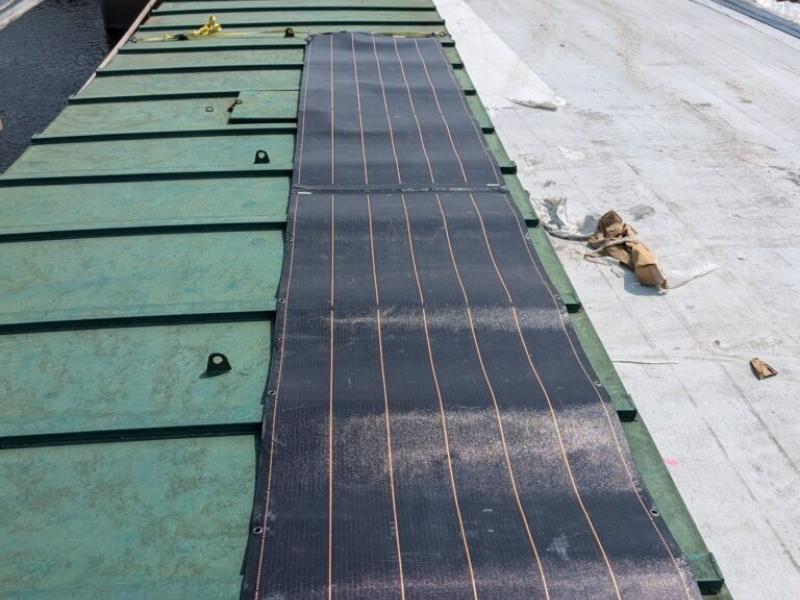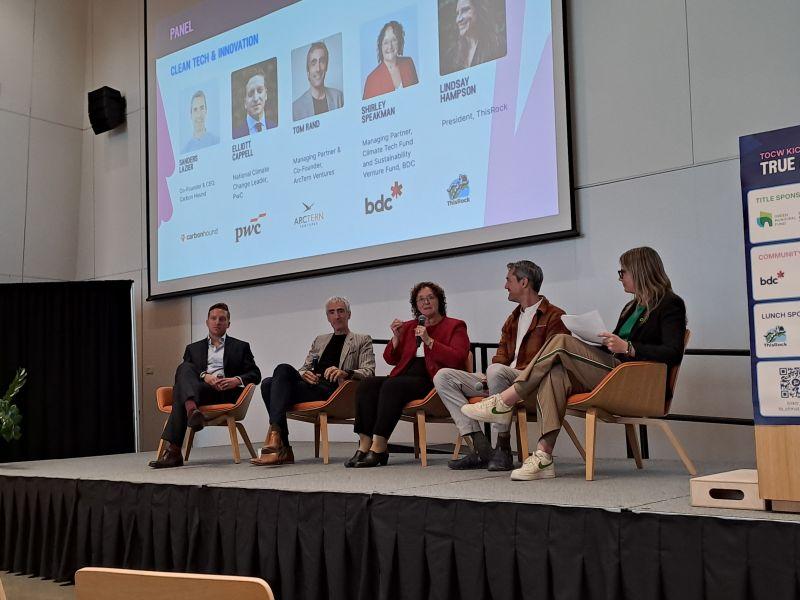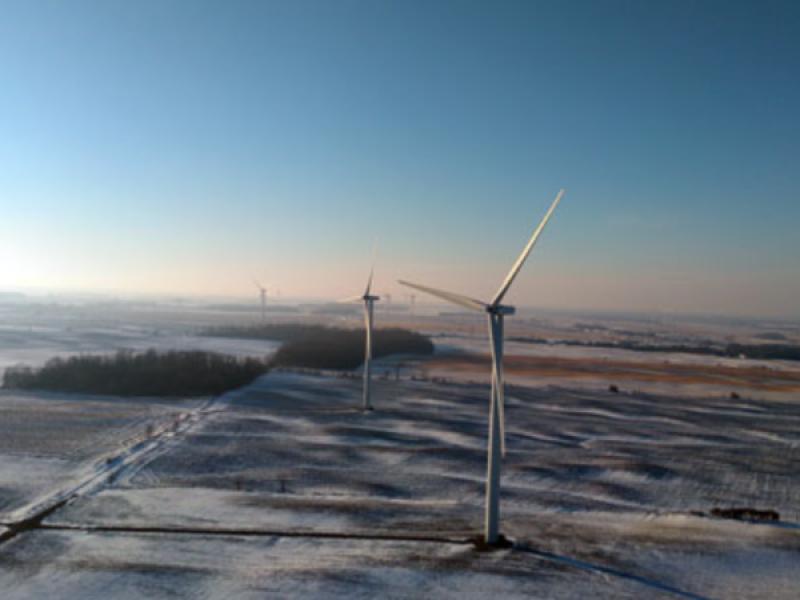
R-Zero, a clean air tech company with dual headquarters in Salt Lake City, Utah and San Francisco, wants to transform the North American property landscape. Founded in 2020, the startup is now in the process of deploying its proprietary UV-based air disinfection technology to buildings in the public and private sectors.
R-Zero recently closed a $143 million (all figures Cdn) Series C funding round, which included global investment firm Caisse de dépôt et placement du Québec (CDPQ) and BMO Financial Group.
Billing itself as a healthy buildings technology company, R-Zero has developed a biosafety platform it says kills 99.99 per cent of the microorganisms collected, deposited and continuously recirculated in all shared living spaces.
The promise of its breakthrough technology is so vast that R-Zero has raised more than $200 million in equity financing in the past three years and seen its valuation soar past the half-billion-dollar mark. A little over a year ago, Forbes Magazine hailed the company as one of 25 startups that stand the best chance of growing into billion-dollar outfits.
The person responsible for taking the company to the next level is Jennifer Nuckles, who was appointed CEO of R-Zero just over a year ago.
The potential impact of R-Zero's technology
In an exclusive interview with Sustainable Biz Canada, Nuckles detailed the impact R-Zero's clean air tech could have on every shared community space by exponentially improving air quality in hospitals, offices, factories, warehouses, schools, government buildings and other workplace environments.
"Every occupied indoor space can now benefit from R-Zero technology," Nuckles said.
She earned her MBA at Harvard Business School and previously served as executive vice president at Sofi, chief marketing officer at Doctor on Demand and spent over a decade at the disinfection unit at Clorox.
"We make these closed environments healthier and smarter by means of a combination of our proprietary software and hardware. Using infrared cameras, our software is able to assess all the environmental factors of an enclosed space – indoor air quality, oxygen levels, ozone levels, the number of people, the movement of people – and provide a risk score and risk assessment based on all these data points," she said. "Our software then instructs and manages our UV-C hardware installations in real time to disinfect the air and surfaces in those spaces."
By deploying its triad of patented UV-C light installations, Internet of Things-connected software and sensors, and AI systems, the company is primed to ensure the millions of people who occupy public spaces will be able to breathe clean, decontaminated, germ-free air.
"Previous means of delivering healthy indoor air have been astronomically expensive. But what we've done at R-Zero is to bring down the unit economics and allow for the installation of our software and hardware tech that generates improved outcomes for the verticals that we focus on, which are predominantly healthcare facilities, schools, as well as public sector and commercial real estate," Nuckles said.
R-Zero tech lowers HVAC operating costs and carbon footprint

Beyond the health benefits to the general public, R-Zero's technology represents an important advance in sustainable living by reducing the need for HVAC systems to burn more energy. HVAC systems were originally conceived for the purpose of heating or cooling the air inside closed spaces more efficiently.
As a consequence of the COVID pandemic, these new units are typically running at several times their normal speeds in order to increase the rate of air circulation as a means of improving indoor air quality. This merely serves to burn more energy, the exact opposite of the purpose for which the HVAC systems were installed in the first place.
"Our tech is complementary to HVAC systems. You can't cool and heat a room with UV-C, but what you shouldn't be using your HVAC system to do is to move air through the building," Nuckles explained.
"What's happened in recent years is that as HVAC systems have become more prevalent, they are running at a higher rate by a factor of 50 per cent or more because of the importance of circulating air more frequently to make indoor spaces healthier.
"This is why we've seen many companies blow their bottom line because of rising energy costs and miss their sustainability credits. They're also having to replace their HVAC systems more frequently and in many cases install MERV 13 filters because of the importance of particle removal, which means that they are wearing out their HVAC systems faster."
Nuckles estimates R-Zero's tech platform used only 1/20th of the cost of a commercial HVAC system. "And most of the companies trying to solve their indoor air health are using solutions that are actually contributing negatively to the Earth, which is why they're adopting our UV-C tech," she said.
R-Zero enables properties to meet stringent new ASHRAE standards
In July, ASHRAE, the Atlanta-based global body which sets minimum air quality standards in the effort to create a healthy and sustainable built environment, set forth its code-enforceable Standard 241.
This is a more stringent set of requirements intended to reduce the risk of airborne disease transmission in public spaces and family dwellings. Standard 241 will place enormous pressure on property management companies to upgrade their air quality systems, which could further incentivize them to the install R-Zero clean air units.
"In addition to the new ASHRAE standards, the U.S. Centers for Disease Control and Prevention has also published new guidelines which are mandating effective air changes per hour in indoor spaces, and these represent a major upgrade from what existed before," Nuckles said.
"For example, the previous standards required that a waiting room in a hospital be subject to 12 air changes per hour. The new standard requires 40, so that's a 3.5-times improvement. R-Zero systems generate 10-plus effective air changes per hour whereas an HVAC system can only deliver two to three per hour."
R-Zero making major push into commercial real estate sector
R-Zero is the brainchild of Grant Morgan, formerly of Abbott Laboratories, who was appalled by the heavily inflated cost of hospital-grade ultraviolet light disinfection systems. "That’s a lightbulb on wheels with a timer. There’s no way it costs $100,000 to make," Morgan said in a 2022 Forbes article.
He then partnered with venture capitalist Ben Boyer and drone company executive Eli Harris to co-found R-Zero in April 2020. Within a year, R-Zero was posting annual revenue of nearly $18 million and on its way to becoming a major new player in the green economy.
Today, R-Zero is experiencing exponential growth on the strength of its market penetration and deployment into the education, healthcare and seniors-care facility sectors. This is largely attributable to how companies, governments and other large employers are under increasing pressure to ensure greater workplace safety by providing clean air for their workforces.
"What's most important to corporations and other institutions is the avoidance of liabilities going forward, meaning people not getting sick. Many companies are looking to reduce their operating costs, and the commercial real estate sector has so many headwinds against it right now due to the fact that many people don't want to go back into the office," Nuckles said.
Apart from helping companies improve balance sheets by reducing the loss of productivity and lost hours from people not wanting to return to their offices, R-Zero also expects to be able to reduce employee absenteeism.
"We have found that the commercial real estate sector and companies that are mandating people to come back in the office or looking to reduce costs have been very receptive to what R-Zero is offering. Already we have a number of financial institutions that have deployed us at scale in their headquarters," Nuckles revealed.
"Right now we have Salesforce and Netflix, for example, as our clients. And we're also doing a bunch of corporate RFPs (request for proposals) right now, including tech companies in the U.S. We're discovering that companies (are ready to take up) a technology that no one knew existed before."
Ivanhoe Cambridge and CDPQ are major backers of R-Zero
In February, R-Zero announced it had closed on a $143 million Series C funding round led by the Quebec City-based investment firm CDPQ. Other investors which participated in the capital infusion include:
- BMO Financial Group;
- Mayo Clinic;
- Qualcomm Ventures;
- Upfront Ventures;
- DBL Partners;
- World Innovation Lab;
- Bedrock Capital;
- SOSV; and
- John Doerr.
"CDPQ is one of R-Zero's principal investors . . . Also, in Canada, Ivanhoe Cambridge, which is one of CDPQ's portfolio companies, sits on our board," Nuckles said.
"We are going into three Ivanhoe locations in New York City. In addition, we're expanding into Canada with our partnership with University Health Network in Toronto. We're working with several hospitals in Canada.
"Last year we applied for Health Canada approval on all of our devices. All R-Zero devices are CARB certified in the state of California as well as UL certified throughout the U.S. Canada marks our first international expansion."
Is there a Tesla in R-Zero's future?
Another sector that R-Zero is targeting is transportation. As is the case with office buildings and other enclosed spaces, planes, trains, and automobile fleets offer unlimited opportunities for the implementation of the company's germ neutralizing tech.
Ira Ehrenpreis, an original Tesla investor, also sits on R-Zero's board of directors, which could help pave the way for a major partnership.
"We are actually working with Tesla right now on many of their sustainability initiatives," Nuckles said. "The advantage our system offers is that a UV-C beam runs off of the same charge as a laptop. So transportation is a big use case for us . . . and some commercial fleets of cars are now running UV-C through their vehicles' dashboards."










